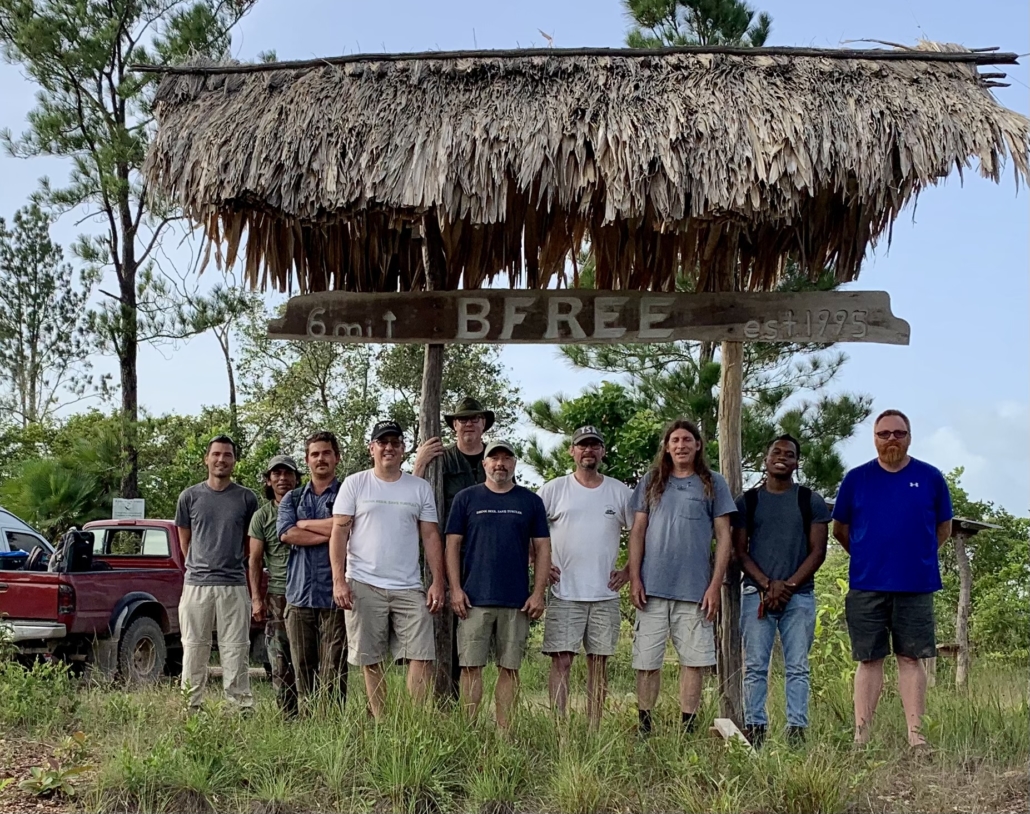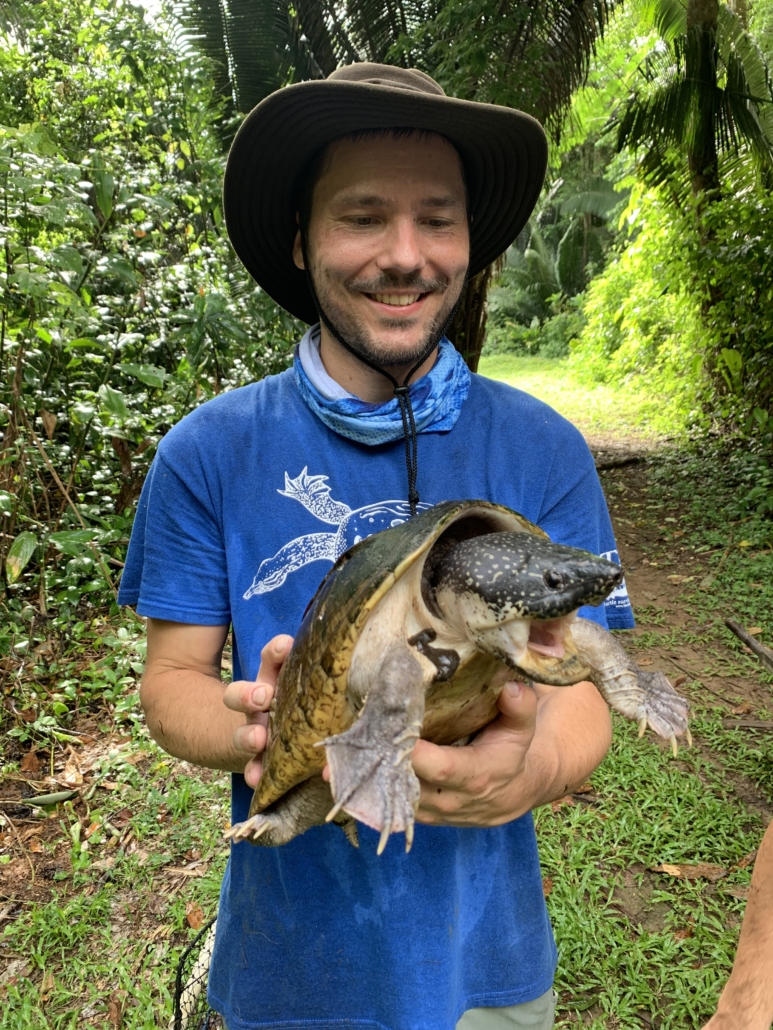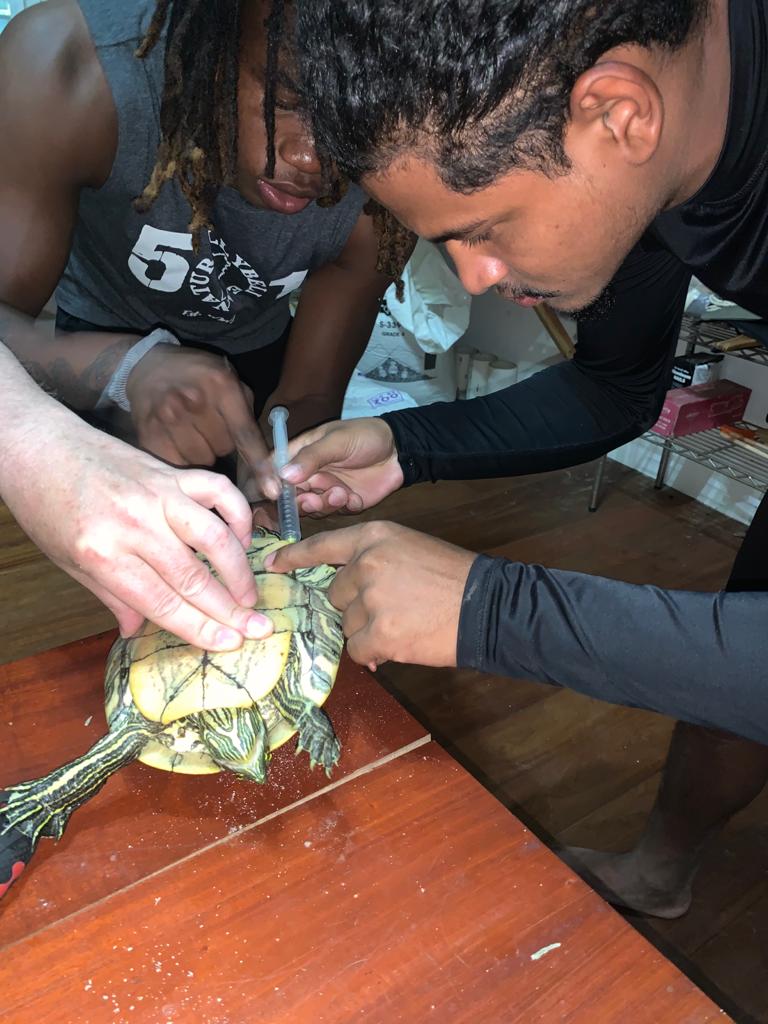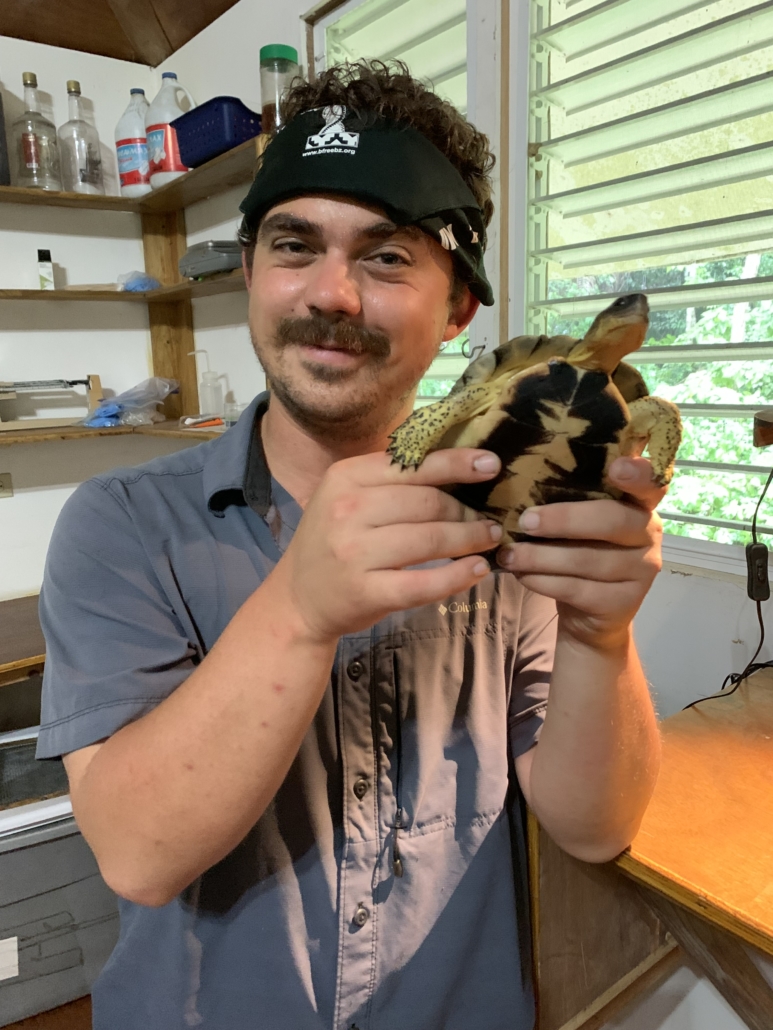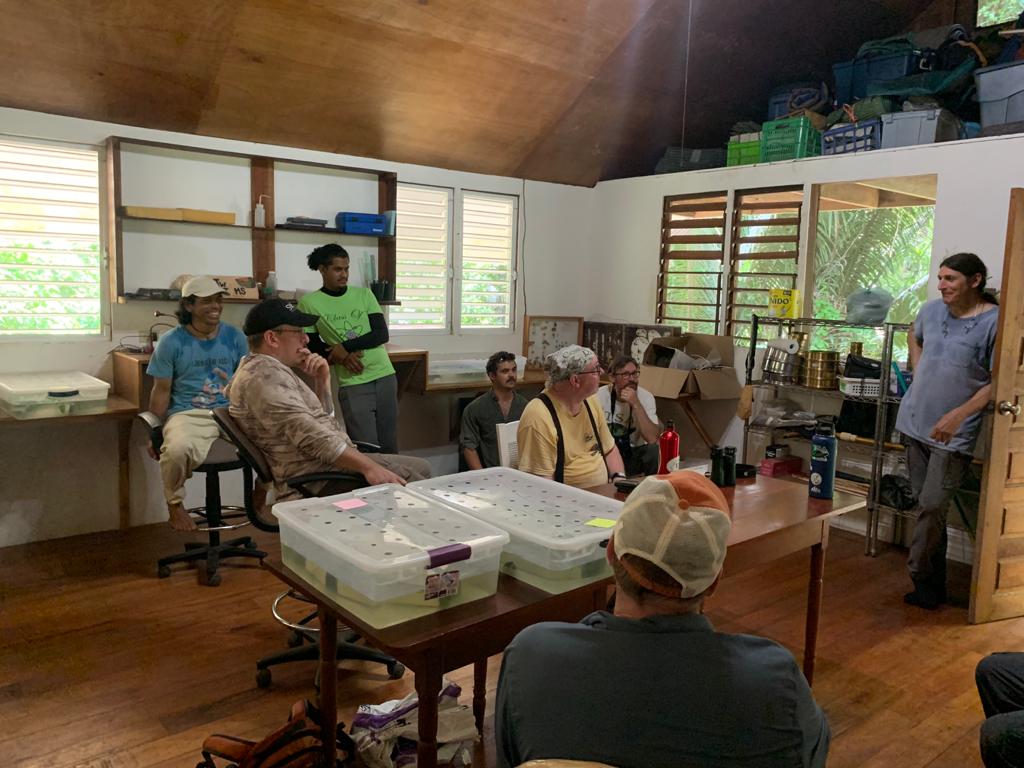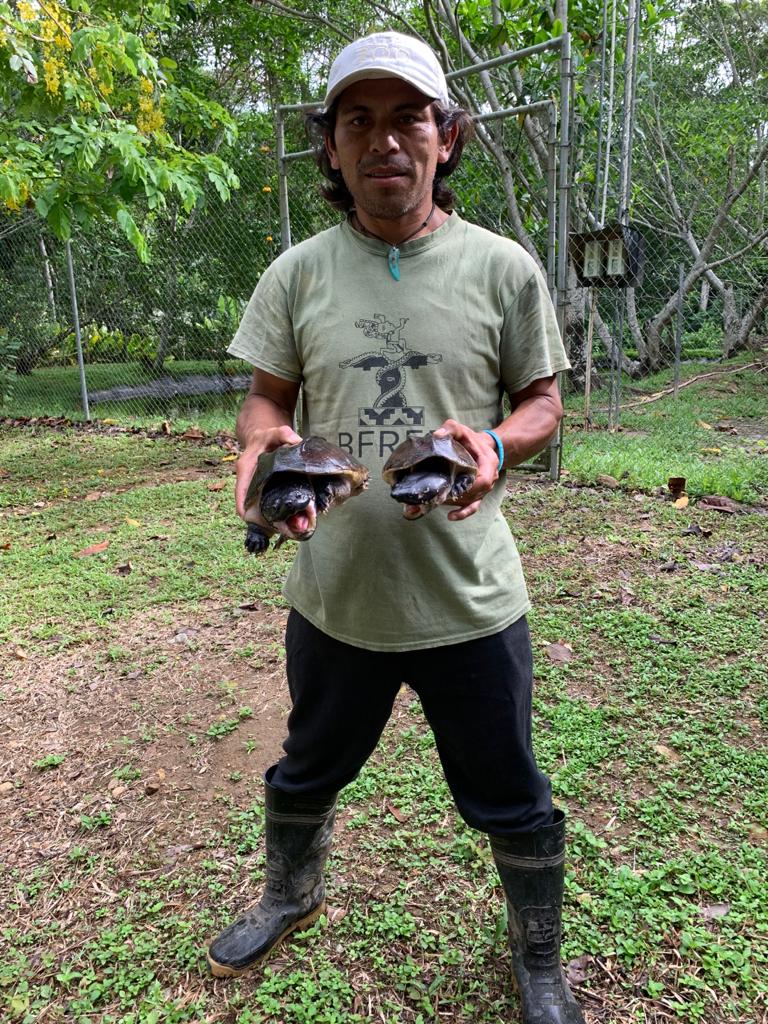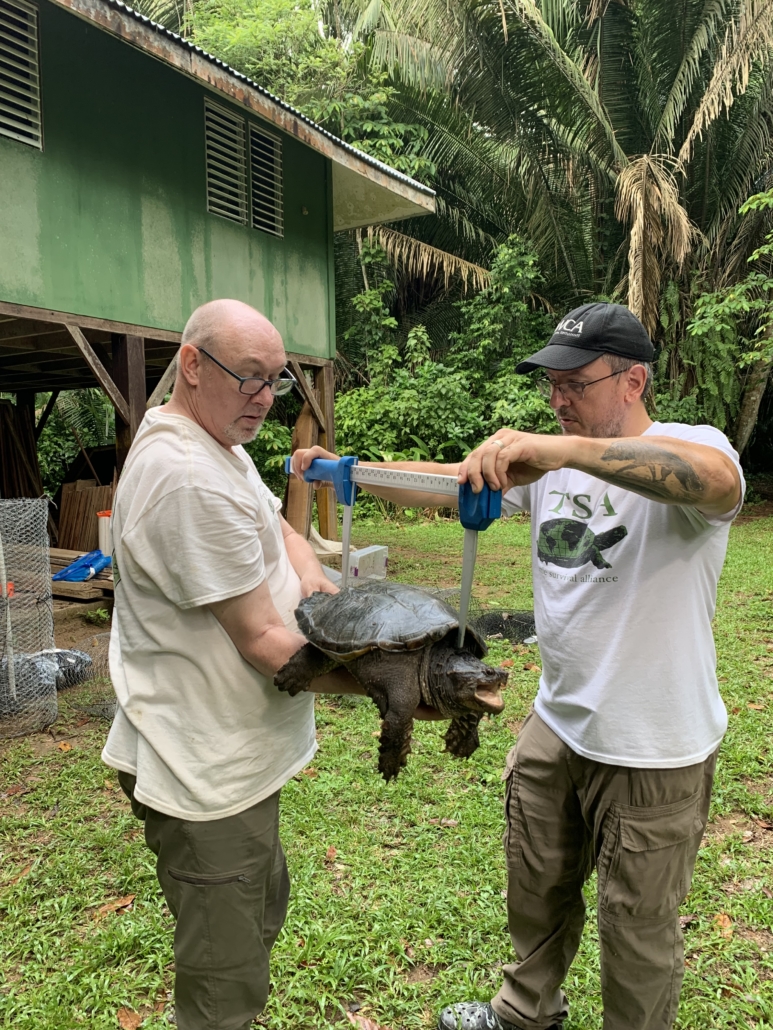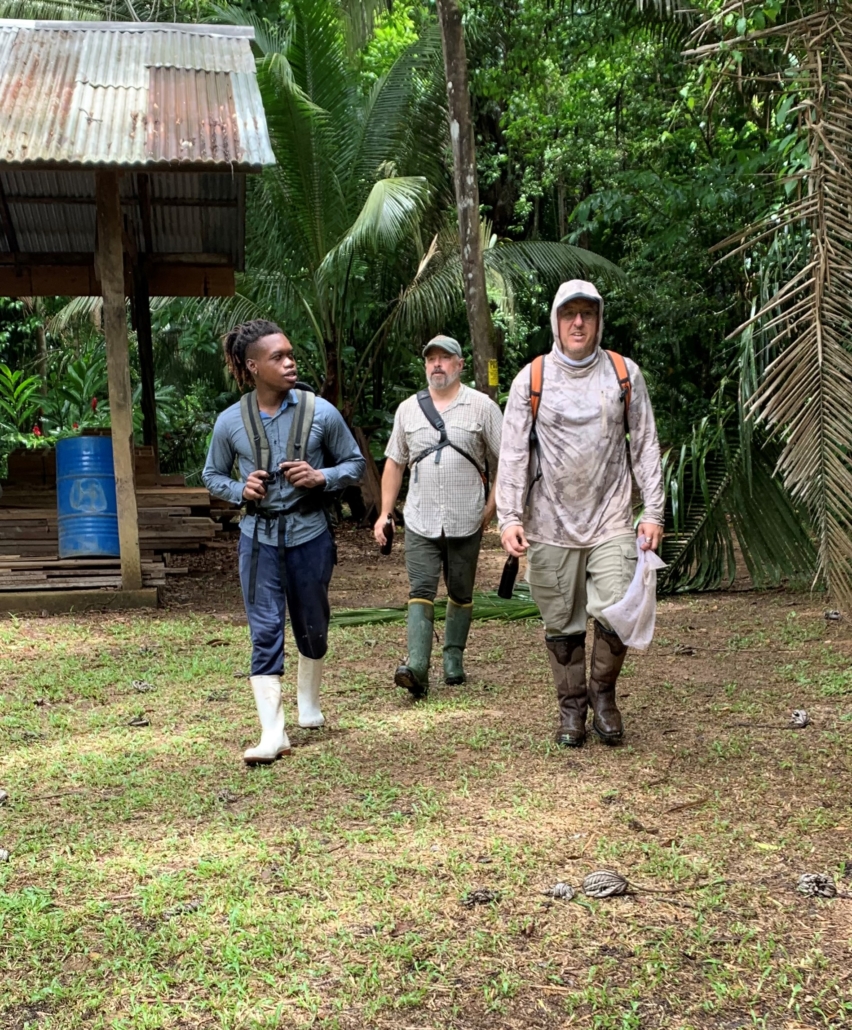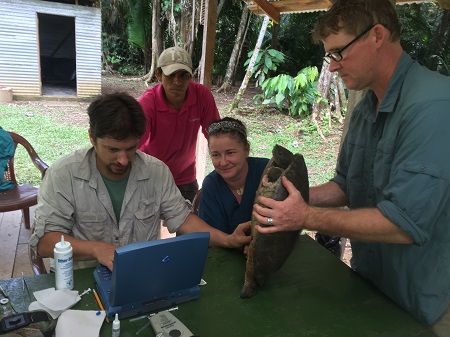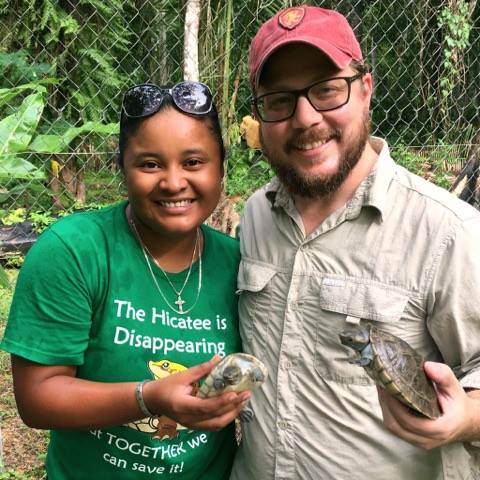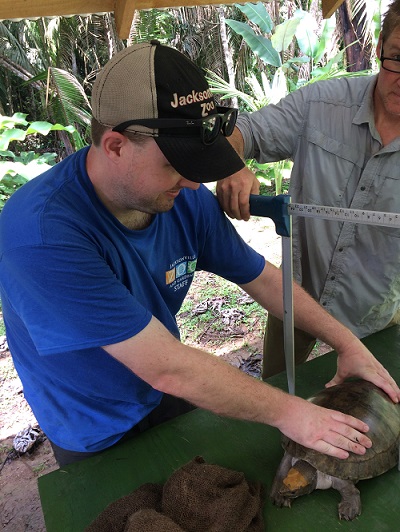Wildlife Fellow, Jonathan Dubon Embarks on 2nd Year
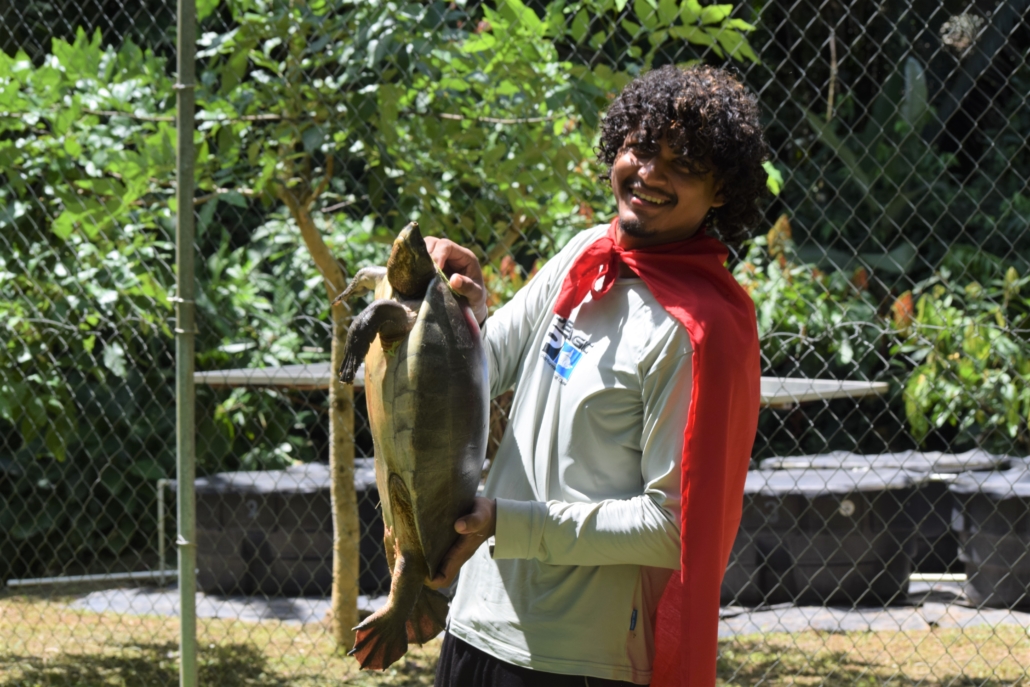
During the September 2020 Health Assessment wearing his Hicatee Hero cape 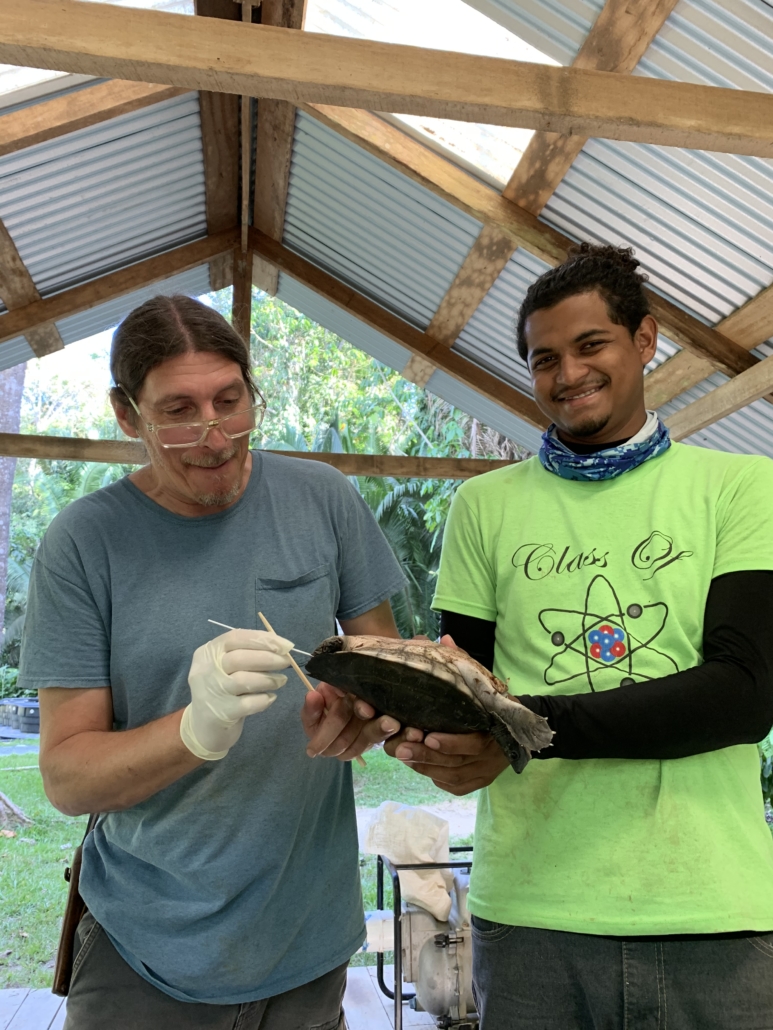
With Jacob Marlin during the February 2021 Hicatee Health Assessment 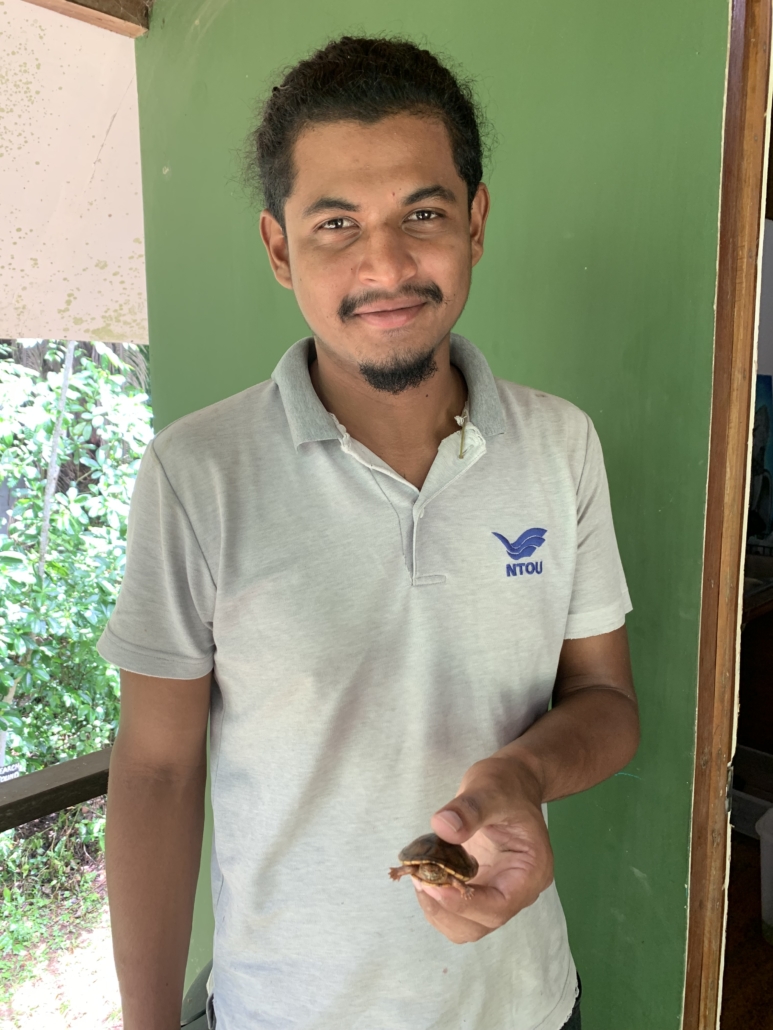
With a hatchling Tabasco mud turtle during the TSA-NAFTRG survey of the BFREE reserve
Jonathan Dubon is the second Wildlife Fellow to take part in the BFREE Fellowship Program. Jonathan began working with BFREE in June 2020, immediately after the shelter-in-place order was lifted in Belize. He assists Tom Pop at the Hicatee Conservation and Research Center (HCRC), and although his program began during the COVID pandemic, his first year has been a productive one.
Under the mentorship of Tom Pop, Jonathan has learned how to feed and care for all turtles at the HCRC. He has learned to look for signs of stress and illness and to collect morphometric data during the bi-annual health assessments. He has worked closely with Tom on several projects to upgrade the facility; the most notable have been improvements to the nesting areas and the water movement.
Additionally, Jonathan has been responsible for updating and managing an ongoing census of the captive population of Hicatee turtles in residence at the HCRC. With hundreds of turtles hatching each year and with the recent turtle releases, this is no easy task. The information is constantly changing, so he has to review the data regularly to ensure accuracy. He has taken on the essential responsibilities of creating quarterly reports of activities affiliated with the HCRC, water quality testing at the HCRC, and managing the weather data for the entire field station.
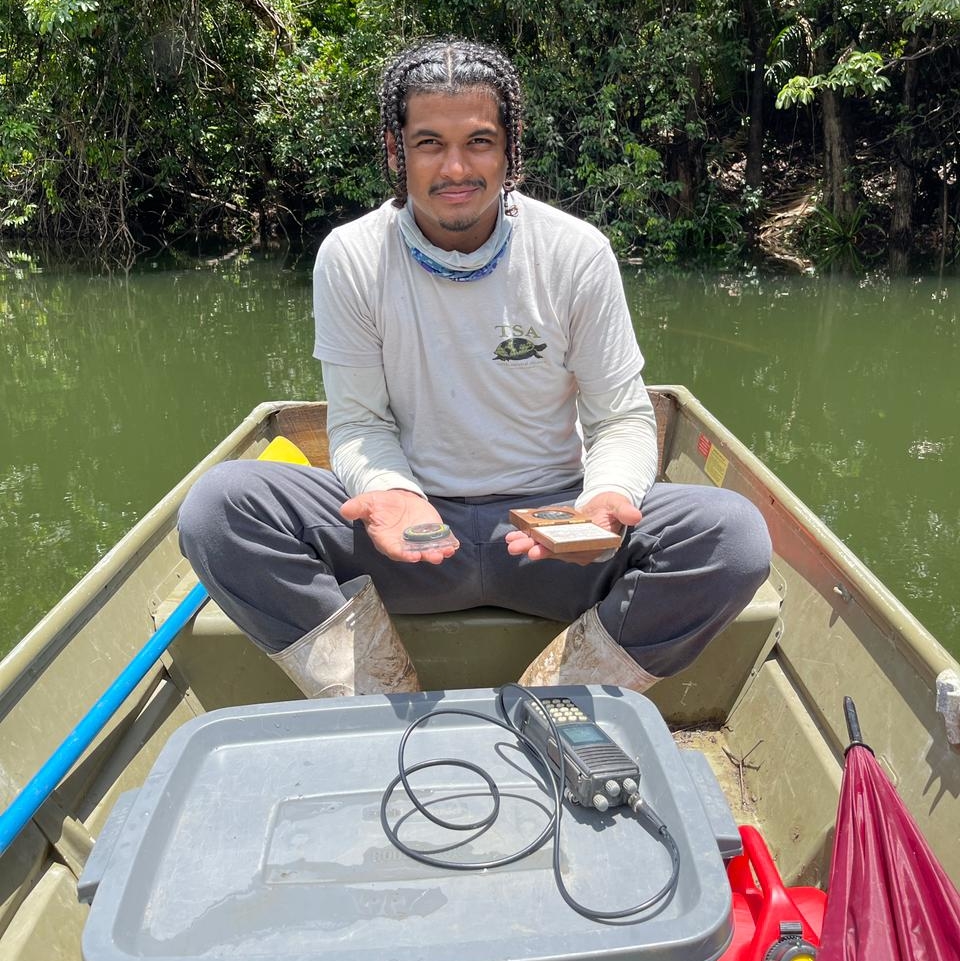
Over the past year, Jonathan has both led and co-presented on several virtual presentations. On August 27th at 12:15 EDT, he will present virtually at the 19th Annual Symposium on the Conservation of Tortoises and Freshwater Turtles. His talk is “Environmental Education and Re-wilding of the Critically Endangered Central American River Turtle (Dermatemys mawii) During the 2020 Pandemic.” He will discuss his role in the newly formed Hicatee Awareness Month planning committee and will highlight last October’s awareness campaign. He will also describe the release of the HCRC’s first re-wilded Hicatee turtles and one of the associated community outreach events. To learn more about attending the conference or to see Jonathan’s presentation visit our partner’s website and register for free here:
https://turtlesurvival.org/2021-symposium/
Jonathan has spent the last month in the field monitoring the movements of 25 recently re-wilded turtles from the 2021 hatchling cohort. He and our partners from Belize Turtle Ecology Lab are radio-tracking turtles to begin to understand how far they travel from their release point, what their habitat preferences are, and how they fare after being released.
In addition to turtles, Jonathan has an interest in snakes and large cats. In his final year as Wildlife Fellow, he hopes to work more directly with the large mammal camera trapping project. With new Panthera cameras stationed throughout the property, his involvement will likely become a reality in the very near future.

Pit-tagging a Mesoamerican slider 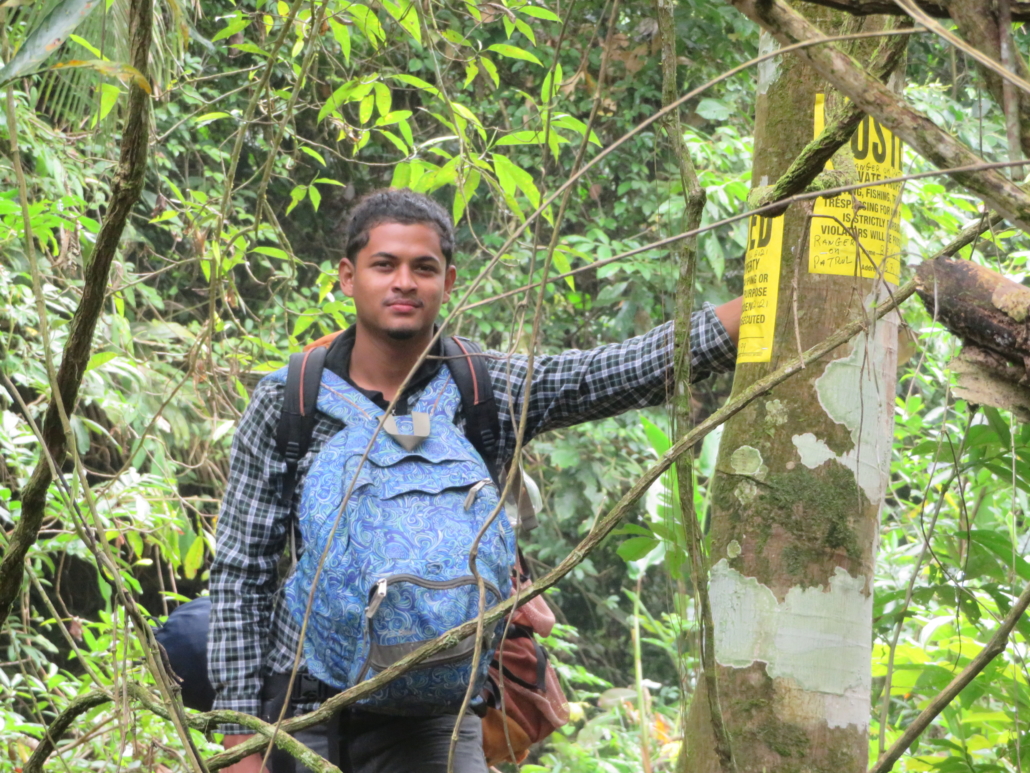
Fellow’s Ranger training weekend 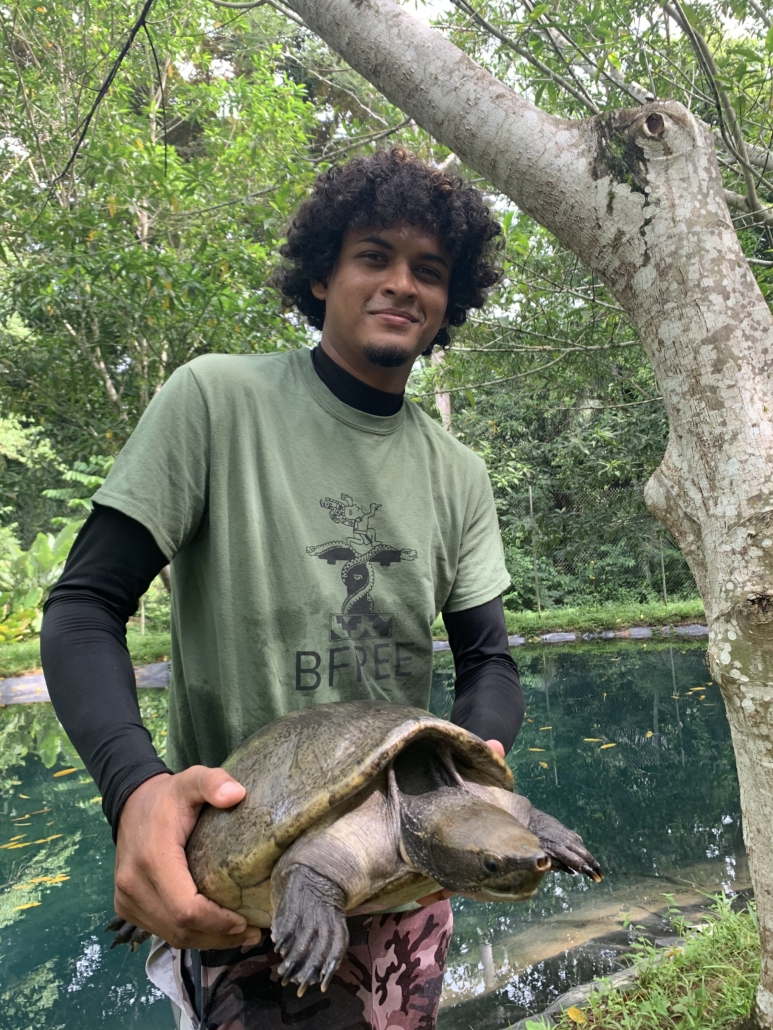
Holding an adult female Hicatee 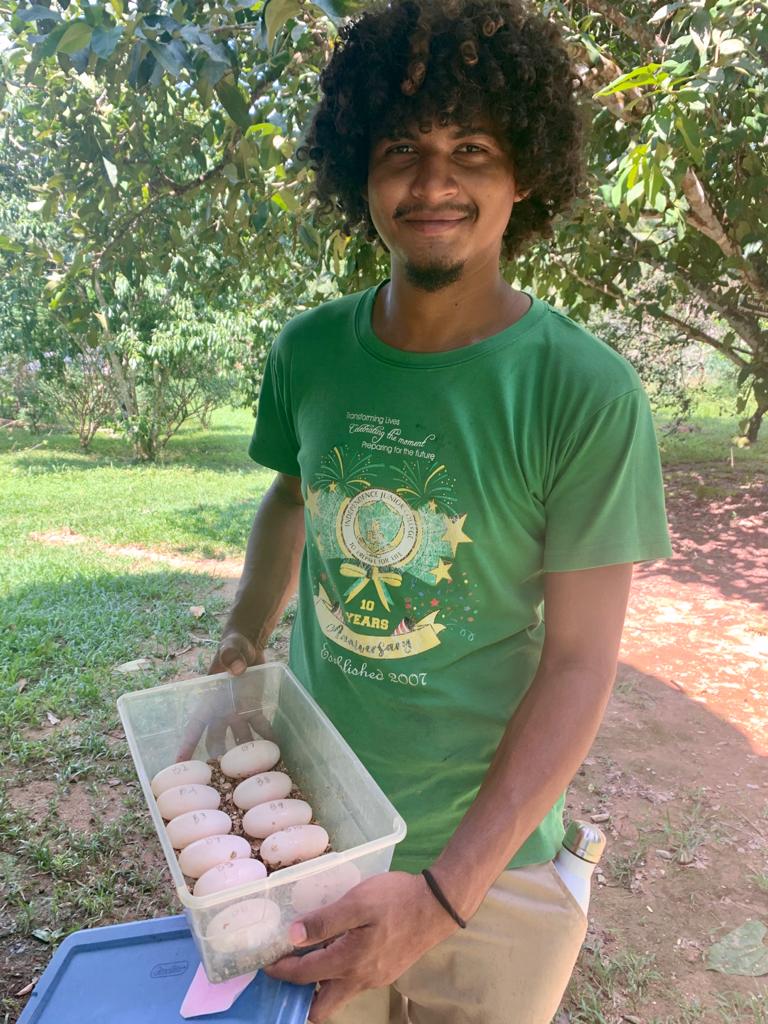
Collecting Hicatee eggs from the ponds

